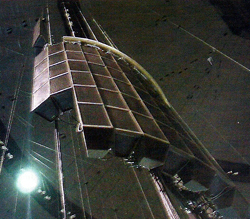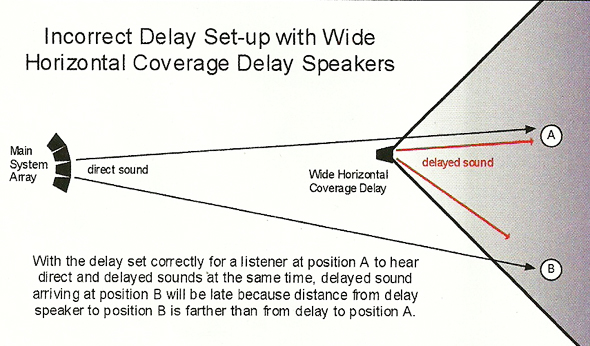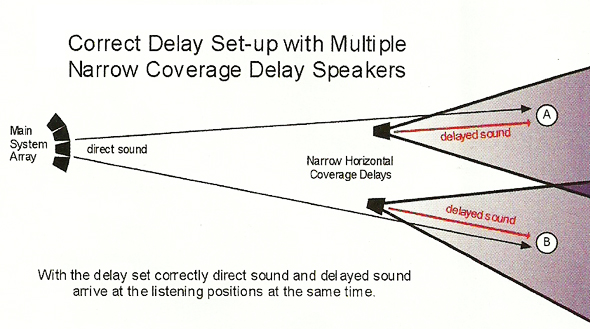
Base the response of your delay loudspeakers on these listening results.
In this manner you can reinforce only what is necessary to the far reaches of the room to bring the balance of the system back to where you want it.
Be careful not to be too radical with your corrections here, especially at higher frequencies where directionality is very obvious.
I have heard a very well set-up delay system that had too much high-frequency information coming from it so while most of the mix seemed to be emanating from the stage… the hi-hat was perceived coming from a nearby delay loudspeaker.
Finally, one of the most common mistakes I see with delays is the use of wide horizontal coverage from a single position.
Rather, more delay positions, individually tuned and dispersing in tighter patterns directly away from the main arrays will give a much better result. Of course there must be a balance struck between rigging points and motors available, drive electronics to tune the individual positions, amps, cabling … etc. In order for the delay loudspeakers to be timed correctly, everyone hearing them must be the same distance away.
By allowing this coverage to be too wide, it would create a situation where a portion of the listeners are farther away than others requiring different delay times to compensate for this distance. (See diagrams directly below).
The more you can keep the delay position listeners in a direct line from the main arrays, past the delay positions that only they can hear, the more seamless the Integration of tile delay system will be. In New Orleans, we used Smaart to set the initial delay times. Then we made fine adjustments based on listening.
If you don’t have all of the high tech stuff to do this, a simple tape measure will also give good results, (Perhaps not in the Superdome, but say outside where it is easy to get accurate readings dragging a tape measure around.) Set your delay processors to show the delay in feet as opposed to milliseconds and you can transpose the readings directly from the tape to the processors.
At the end of the day, with all of this speaker-face and about three quarters of a million warts to make it work, I was thrilled to finally get to turn it all on. From what I saw on the faces of most of the band’s mixers, it was working for them too!
Dan Laveglia is a system engineer for Clair Bros.


